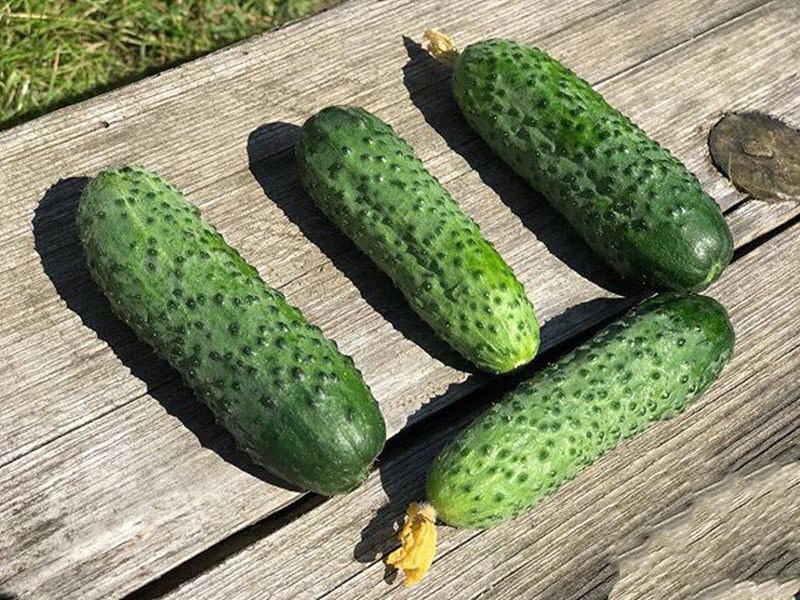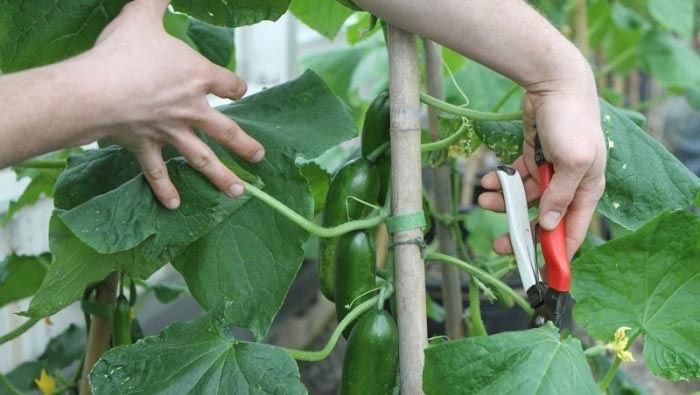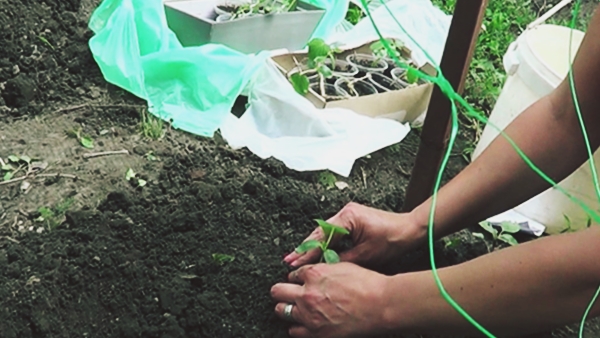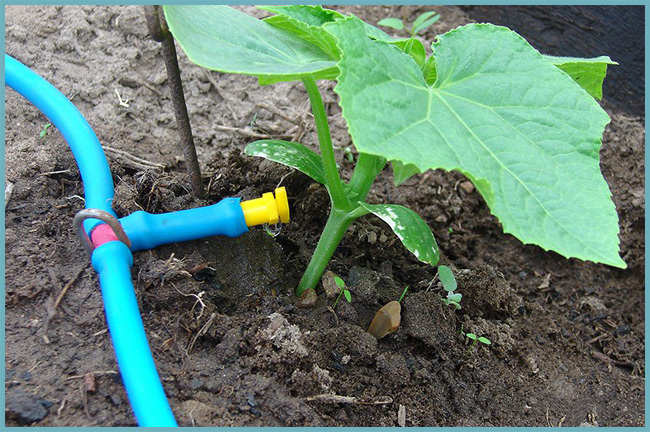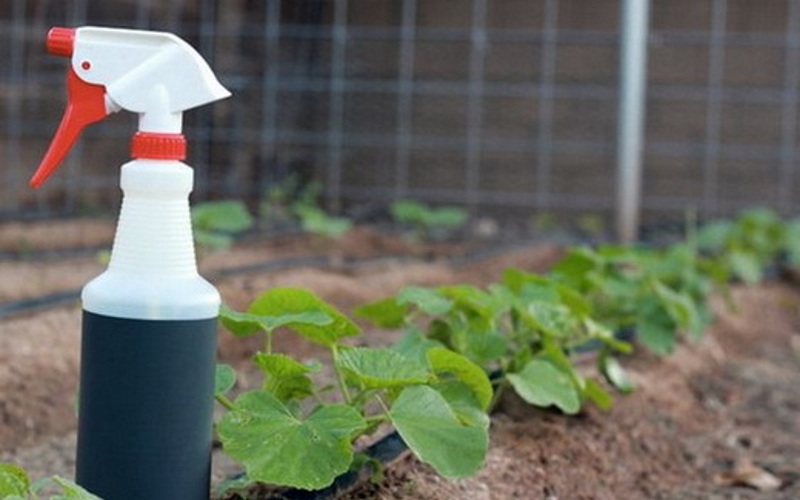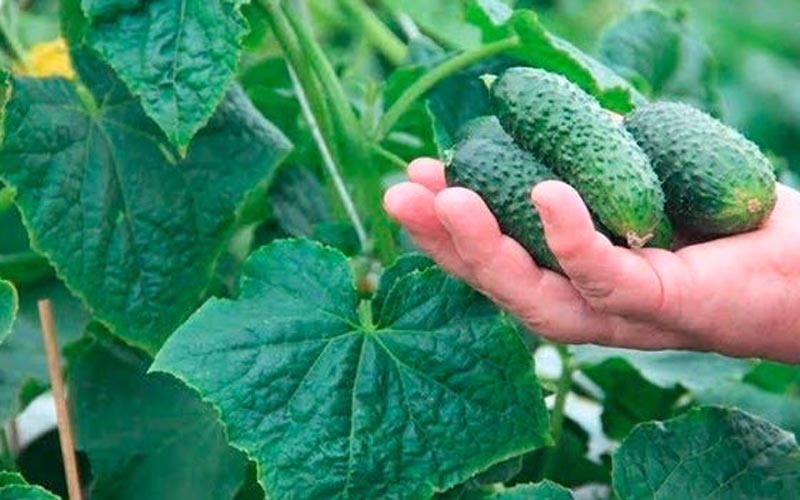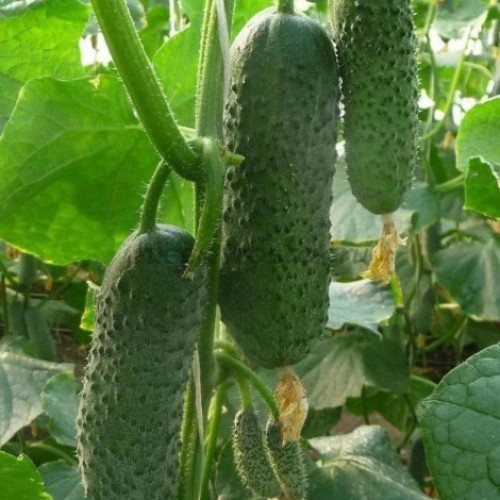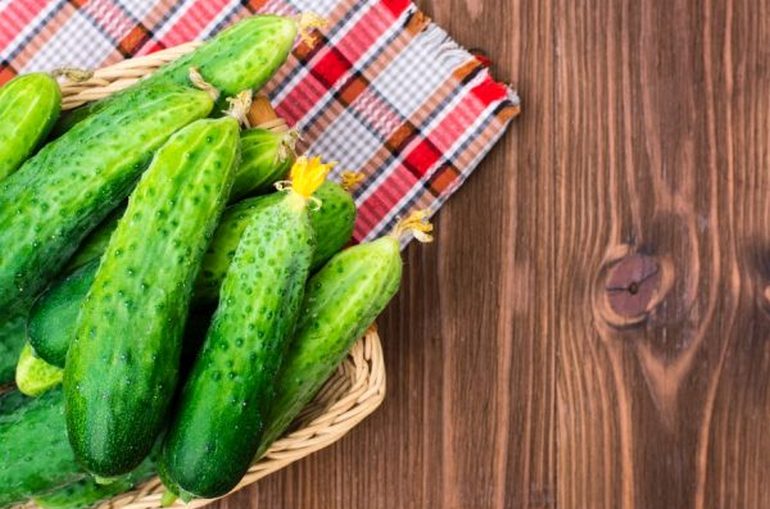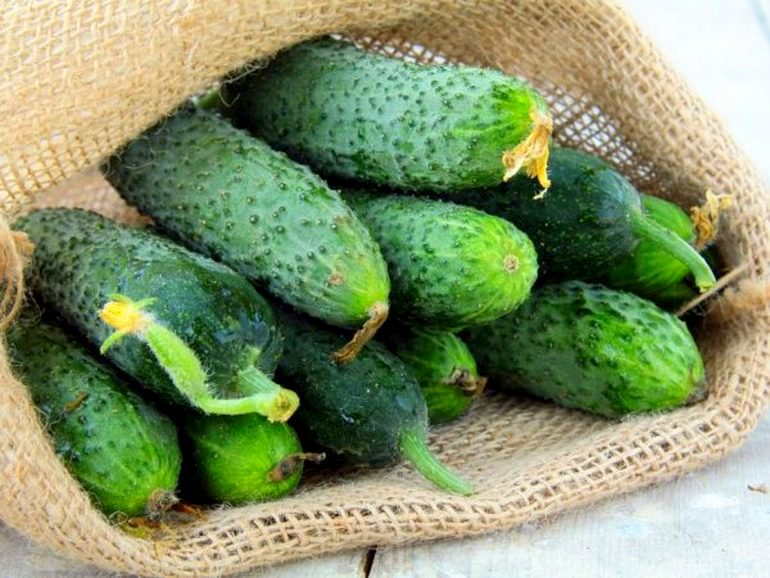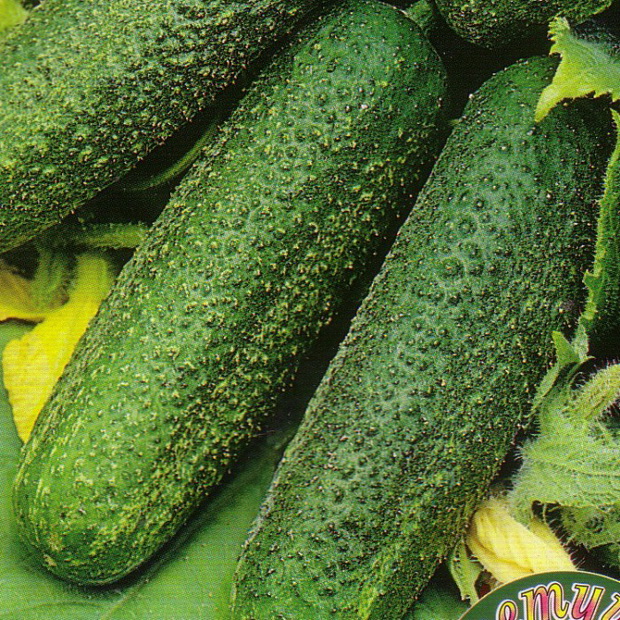Content:
Natives of India over 600 years ago, cucumbers are now one of the favorite vegetables in home gardens. Fragrant, crunchy fruits are delicious both fresh and prepared. Their green lashes with bright yellow flowers grow equally well in open and closed beds.
Agronomists are constantly working to create seeds of vegetables with high yields, excellent taste, disease resistant. Recently, breeders of the agrofirm "Partner" have bred a cucumber hybrid Shosha F1. The seeds of this variety appeared on sale in 2016, but many have already fallen in love with this type of cucumber.
Characteristics of cucumber Shosha F1
The Shosha hybrid is early maturing, from the emergence of the first cucumbers to the ripening of the first cucumbers, it should take from 40 to 43 days.
Dark green fruits grow small, 9 - 12 cm, weighing 45 - 80 g. The surface is covered with tubercles with light pubescence.
The Shosha cucumber is parthenocarpic, that is, pollination is not required for the formation of ovaries. All flowers on a plant are female.
Agronomists took care of removing the bitterness from this hybrid, the taste is pleasant sweetish. The skin is thin, the pulp is juicy, tender, elastic. There are a lot of seeds in cucumbers, but they are all without embryos, small, not felt when used. Suitable for pickling and pickling.
Collected greens retain their freshness for at least 1 week if stored in plastic bags or boxes in the refrigerator. The stalks and flowers must be removed. Due to the inability of the seeds to ripen, the fruits do not turn yellow.
Shosha are of the bunch (or bouquet) type. 3-4 ovaries are formed in one node. With sufficient nutrition, beautiful strong greens grow from all the ovaries.
Suitable for greenhouses and open ground. If you take good care of it, they give 18 kg per m2 with a closed method of cultivation, on open beds the yield is smaller - 12 kg per m2.
The plant is resistant to the most common diseases affecting the culture:
- ordinary cucumber mosaic;
- powdery mildew;
- target leaf spot;
- cucumber vein yellowing virus.
The seeds are packaged in paper bags of 5 pcs.
Agricultural technology of cultivation
No matter how wonderful the characteristics of the variety are, with the wrong care, the result can be upset. So that the efforts are not in vain, and the harvest pleases with quality and quantity, you need to follow simple growing rules.
- They love warmth and moisture. The optimum air temperature is 27 - 28 degrees, humidity - 70%.
- In hot weather and with an excess of nitrogen in the soil, the number of ovaries decreases or they are located unevenly (at the bottom of the stem, more than in the middle and upper parts). Potassium fertilizer must be added. Do not overheat the plant, ventilate the greenhouses regularly.
- The number of ovaries in a node will be greater in good lighting conditions.
- Pinch the side stems regularly, otherwise the ability to set fruit will weaken.
- Remove the growth point of the main stem if the greens are not poured.
- You need to pick cucumbers regularly, every 1-2 days. Then the grown fruits will not interfere with the growth of new ones.
Landing
Planting cucumbers is done in two ways:
- seeds;
- seedlings.
Before sowing, the seeds are soaked in water until they swell.
If you want to get the first greens 2-3 weeks earlier, it makes sense to prepare seedlings. For this, the seeds are sown in small pots. At the age of 25 days, young plants are planted in a greenhouse or greenhouse. By this time, at least 3-4 leaves should appear. In no case should the seedlings be buried, leave the level that was in the pot.
In central Russia, you can plant seeds in open ground when the soil has already warmed up, in late May - early June. In the greenhouse - in mid-May.
After sowing seeds or planting seedlings, the soil must be shed with a biological product that prevents root rot. For example, Trichodermin or Fitosporin.
It is advisable to mulch the bed with a non-woven material. Humus, compost or grass cuttings are also suitable (it should not touch the stem of the plant so that it does not rot).
There should not be more than 5 plants per m2.
Care
For intensive formation of ovaries, cucumbers need good illumination. To ensure it, perform the following actions:
- It is recommended to tie cucumber lashes or set a trellis. There will be no need to disturb the plant once again when harvesting by raising the stems.
- It is imperative to pinch the side shoots along the entire length of the stem. When the plant has reached the height of the greenhouse or trellis, the top is cropped. After all the cucumbers are plucked from the main stem, the newly regrown side shoots are left. Zelentsy will be tied to them.
- The leaves in the middle and upper parts of the lash need to be thinned out, you can partially tear off the leaf plate.
Cucumbers are a moisture-loving plant, so they need regular watering. Watering cucumbers is more correct in the morning with warm water. At the same time, make sure that water does not fall on the leaves of the plant, they turn yellow from this.
If the fruit ripens curves, this is the first sign of depletion of the root system. To restore it, you need to loosen the soil around the stem or pierce it with a pitchfork. Then add growth stimulants (for example, Zircon, Previkur).
Top dressing
At the beginning of fruiting, cucumbers are fed every 7-10 days. For this, complex fertilizers are suitable, in which potassium is 2 times more than nitrogen. If there is not enough potassium, the plant begins to "fatten" - large leaves grow, a powerful stem, while the ovaries are almost not formed. You can feed it with slurry, but add potassium fertilizer to it (potassium sulfate, Kalimagnesia), since the ratio of nitrogen and potassium in it is one to one. A bucket of slurry takes 20-25 g of potash fertilizer.
When all the fruits are collected from the central stem, feed the plant with nitrogen fertilizer for a week to nourish it, add strength.
Fruit picking
It is recommended to collect bundle-type hybrids every 1 - 2 days, the grown fruits delay the formation of new ovaries.
When picking cucumbers, you should remove the stalk almost completely (you can leave no more than 1 cm), this will protect the stem from damage and rot.
Advantages and disadvantages
Shosh cucumbers have almost no disadvantages, but there are plenty of advantages:
- High yield, the plant is strewn with fruits due to the bunch type.
- Excellent taste, no bitterness, thin skin, delicate flesh.
- Suitable for salting and pickling.
- Long fruiting period.
- They do not require pollination, they give fruits longer than bee-pollinated plants.
- Resistance to many diseases, there is no need to use pesticides, the cucumbers are environmentally friendly.
The disadvantages include:
- The inability to get seeds on their own from the fruits, since the seeds do not have embryos.
- High price of seeds in comparison with other cucumbers.
In the collection of the agro-firm "Partner" there is another wonderful hybrid - the Furor cucumber. It is also parthenocarpic, bouquet type. Shosha is slightly inferior to Furor cucumbers in yield, and its price is slightly higher.
It is worth planting a new Shosha hybrid on your site to taste this sweet crunchy cucumber. With proper agricultural technology, you can harvest a good harvest, enough for summer salads and mouth-watering homemade preparations.
